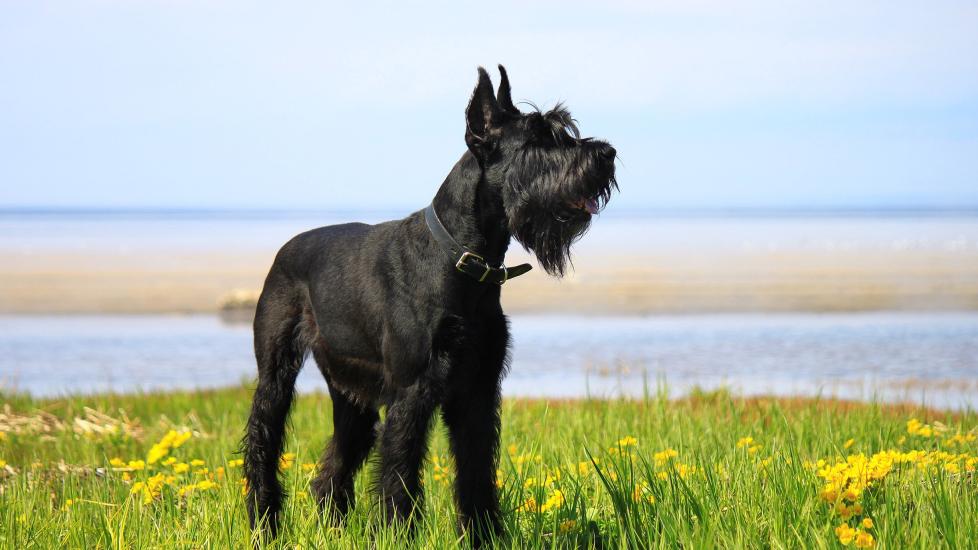Introduction:
The Giant Schnauzer is a large, robust working breed that originated in Germany. Known for their intelligence, strength, and versatility, these dogs have become popular as both family pets and working companions. Their distinctive beards and mustaches give them a unique look that sets them apart from other breeds.
Lifespan: 10-13 years on average
Coat Length: Moderately long with a wiry texture; requires regular grooming to maintain its characteristic appearance. The undercoat sheds moderately.
Alias(es): None (but sometimes referred to as “Giant” or “Big” Schnauzers)
Height: Typically stands between 25 and 28 inches at the shoulder for males, slightly smaller for females.
Place of Origin: Bred in Germany during the late 19th century by crossing Standard Schnauzers with larger breeds like the Great Dane and possibly the Bouvier des Flandres.
Body Size: Large and muscular, with a square build. Males are usually heavier than females.
Shedding Level: Low shedder due to their harsh outercoat, but they do require consistent grooming to keep the hair healthy and free from matting.
Trainability: Highly intelligent and willing to work, making them easy to train for obedience tasks, agility courses, and various jobs such as police work and search and rescue. They respond well to firm, fair leadership and enjoy having a job to do.
Characteristics: Giant Schnauzers are confident, alert, and protective dogs. They make excellent guardians and can be very loyal to their families. However, they also need plenty of exercise and mental stimulation to prevent boredom, which could lead to destructive behavior. Socialization from an early age is crucial to ensure they get along well with people and other animals.
Health Issues: Like many large breeds, Giant Schnauzers may suffer from hip dysplasia, elbow dysplasia, von Willebrand disease (a bleeding disorder), allergies, and some eye conditions. Regular veterinary check-ups are important to monitor health issues common to the breed.
Exercise Needs: High energy levels mean that Giant Schnauzers need daily vigorous physical activity. A long walk or jog followed by playtime in a fenced yard is often not enough for this active breed. They thrive when given opportunities to run off-leash and participate in activities that challenge their minds and bodies.
Suitable Environment: These dogs do best in homes where there is ample space to roam around and expend their energy. They are adaptable to different living situations but will require significant time outdoors if kept indoors should be carefully considered before bringing one into your home.
